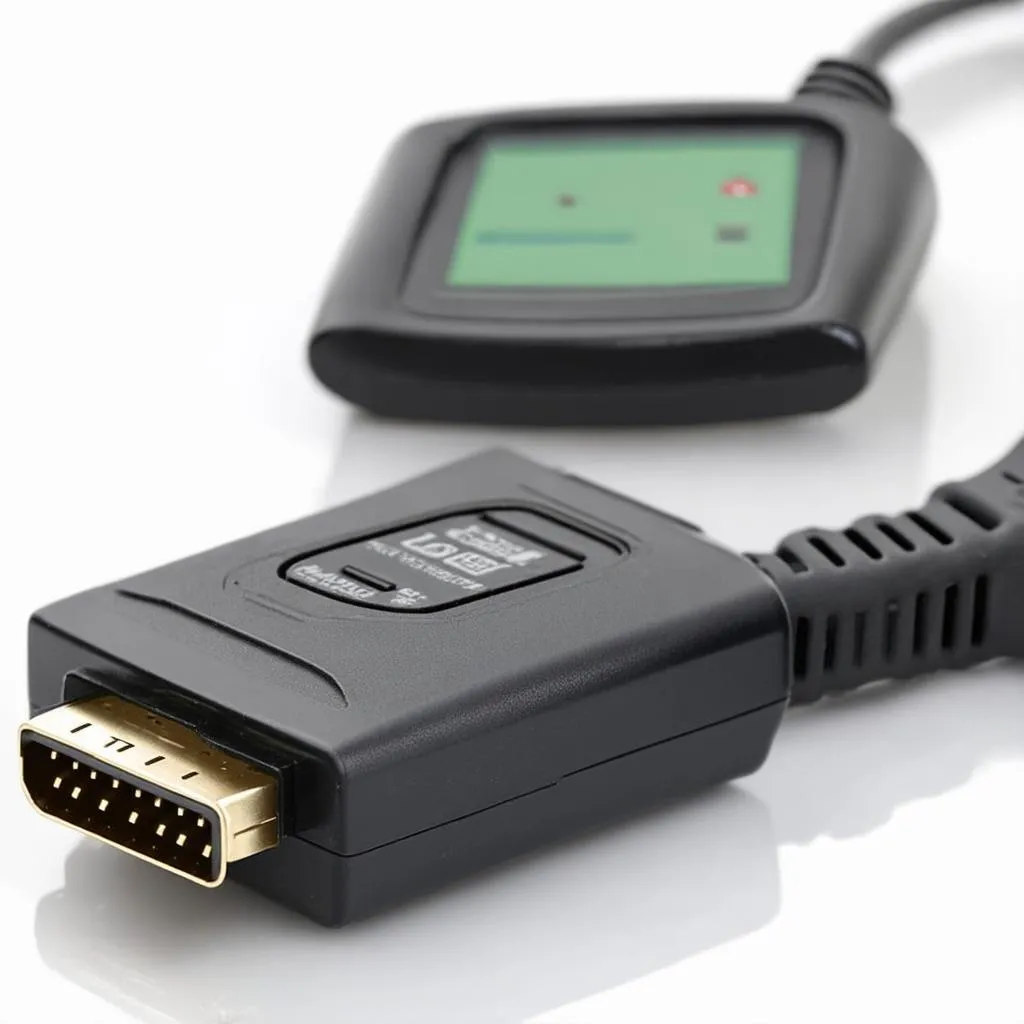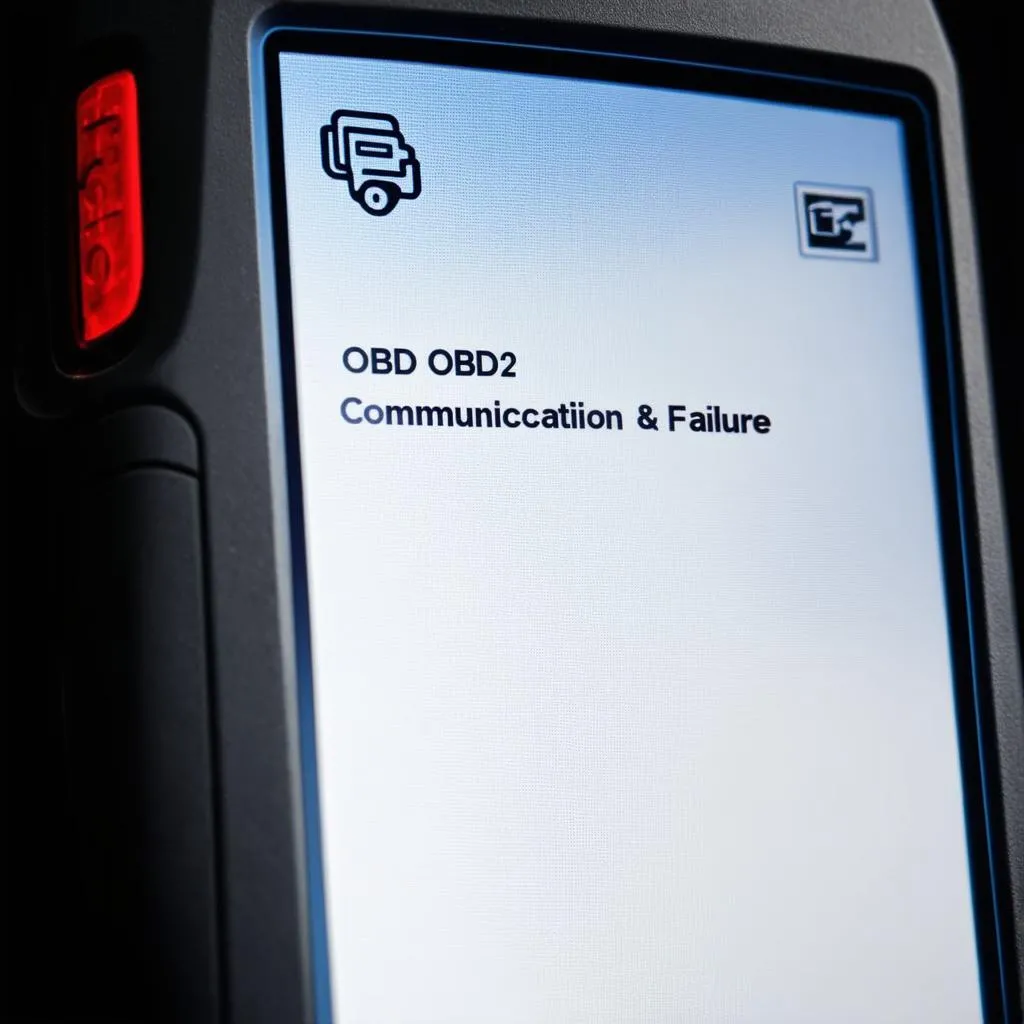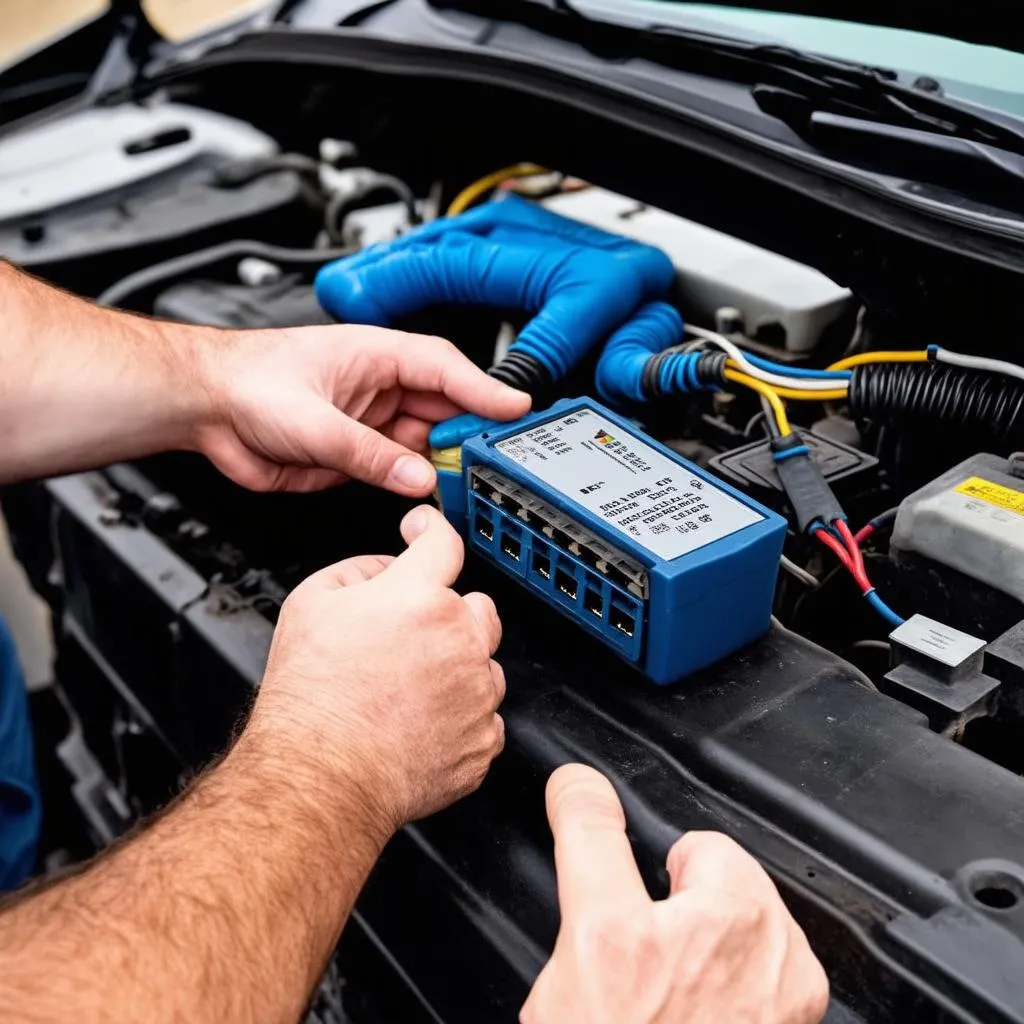What is Obd Communication Failure?
Obd Communication Failure refers to the inability of your scan tool to communicate with your car’s onboard diagnostic system (OBD). This system is like your car’s brain, storing information about its performance and any issues it might be experiencing.
Think of it like a conversation between two friends. One friend (your scan tool) is trying to ask questions to understand what the other friend (your car) is feeling. However, there’s a communication breakdown – the car isn’t responding.
This problem can be due to a variety of factors, each leading to its own unique set of symptoms.
Common Causes of Obd Communication Failure
1. Faulty OBD2 Port:
The OBD2 port is the physical connection point where your scan tool plugs into your car. Over time, this port can become damaged or corroded, preventing proper communication. Imagine a telephone line that’s frayed and tangled – it can’t transmit the signal effectively.
2. Damaged Wiring:
The wiring connecting the OBD2 port to the car’s ECU (engine control unit) can also be damaged, interrupting the communication flow. It’s like a broken chain – one broken link can disrupt the entire chain.
3. Fuse Problems:
Fuses protect electrical circuits in your car. A blown fuse can interrupt the power supply to the OBD2 port, leading to communication failure.
4. Software Issues:
Sometimes, the problem lies not with the hardware but with the software. Your scan tool might be incompatible with your car’s system, or it might be outdated and require an update. It’s like trying to use a vintage record player with a modern MP3 player – they just don’t speak the same language.
5. ECU Failure:
In rare cases, the problem might stem from a faulty ECU itself. This is like a brain injury – it can affect the ability to communicate.
6. Faulty Vehicle Battery:
A low or failing battery can interfere with the communication between the scan tool and the car’s ECU.
Symptoms of Obd Communication Failure
- Error Messages: Your scan tool will display error messages such as “OBD Communication Failure,” “No Communication,” or “Error Connecting.”
- No Data: When you try to access diagnostic data, your scan tool will show blank screens or no response.
- Engine Light (MIL) Blinks Erratically: The check engine light might blink rapidly instead of remaining steady, indicating a severe communication issue.
Solutions to Obd Communication Failure
1. Inspect and Clean the OBD2 Port:
- Start by examining the OBD2 port for any signs of damage, corrosion, or dirt.
- Use a wire brush or a small toothbrush to clean the port.
- Ensure the port is free of debris.
2. Check the Wiring:
- Inspect the wiring connecting the OBD2 port to the ECU for any breaks, fraying, or loose connections.
- If any issues are found, repair or replace the damaged wiring.
3. Check the Fuses:
- Locate the fuse box in your car’s owner’s manual and check the fuse for the OBD2 port.
- Replace any blown fuses with new ones of the same amperage.
4. Update Scan Tool Software:
- Check for the latest software updates for your scan tool.
- Follow the manufacturer’s instructions to update the software.
5. Consult a Mechanic:
- If none of the above solutions work, it’s time to consult a qualified automotive mechanic.
- They can use specialized equipment to diagnose the problem further and recommend appropriate repairs.
Frequently Asked Questions About Obd Communication Failure
1. Can Obd Communication Failure cause a car to malfunction?
While OBD communication failure itself doesn’t directly cause the car to malfunction, it can prevent you from diagnosing underlying problems. Imagine a doctor unable to examine a patient because their tools aren’t working – they can’t properly diagnose the illness.
2. How does Obd Communication Failure relate to my car’s warranty?
OBD communication failure itself might not be covered under your car’s warranty, but if it’s a result of a defective part, such as the ECU or wiring harness, then the repair might be covered.
3. Can I fix Obd Communication Failure myself?
For simple issues like a dirty OBD2 port or blown fuse, you can often fix the problem yourself. However, if the issue is more complex, such as a faulty ECU or damaged wiring, it’s best to consult a professional mechanic.
4. Is it safe to drive my car with Obd Communication Failure?
It’s generally safe to drive your car with OBD communication failure, but it’s important to be aware of any warning lights or unusual behavior. If the engine light is blinking, it’s best to have your car checked out by a mechanic as soon as possible.
Additional Resources
- OBD2 Scanner for European Cars: For those who own European cars, we recommend using a specialized OBD2 scanner designed for these vehicles. https://techcarusa.com/2005-duramax-3500-obd-fail-to-connect/
- OBD2 Code P0335: If you encounter an OBD2 code P0335, it could indicate a problem with your crankshaft position sensor. https://techcarusa.com/obd-code-p0335/
Conclusion
OBD communication failure can be frustrating, but with a bit of troubleshooting, you can often identify and resolve the issue. Remember to approach any automotive repairs with caution, and don’t hesitate to seek professional help when needed. If you’re experiencing OBD communication failure and need assistance, contact us at Whatsapp: +84767531508. Our team of experts is available 24/7 to help you diagnose and fix the problem.
 obd-scanner-connected-to-car
obd-scanner-connected-to-car
 error-message-on-scan-tool
error-message-on-scan-tool
 mechanic-diagnosing-car
mechanic-diagnosing-car